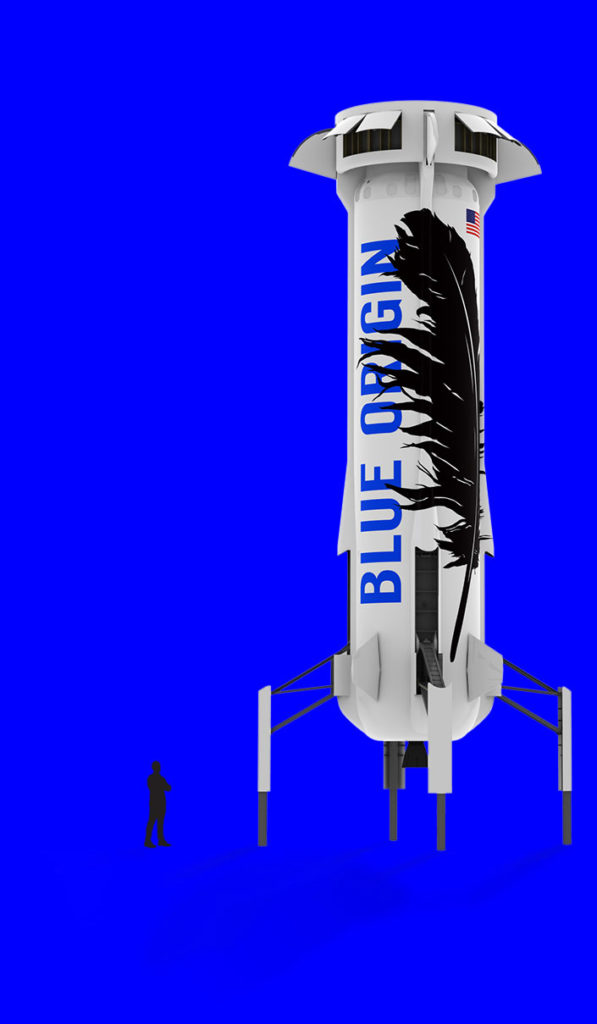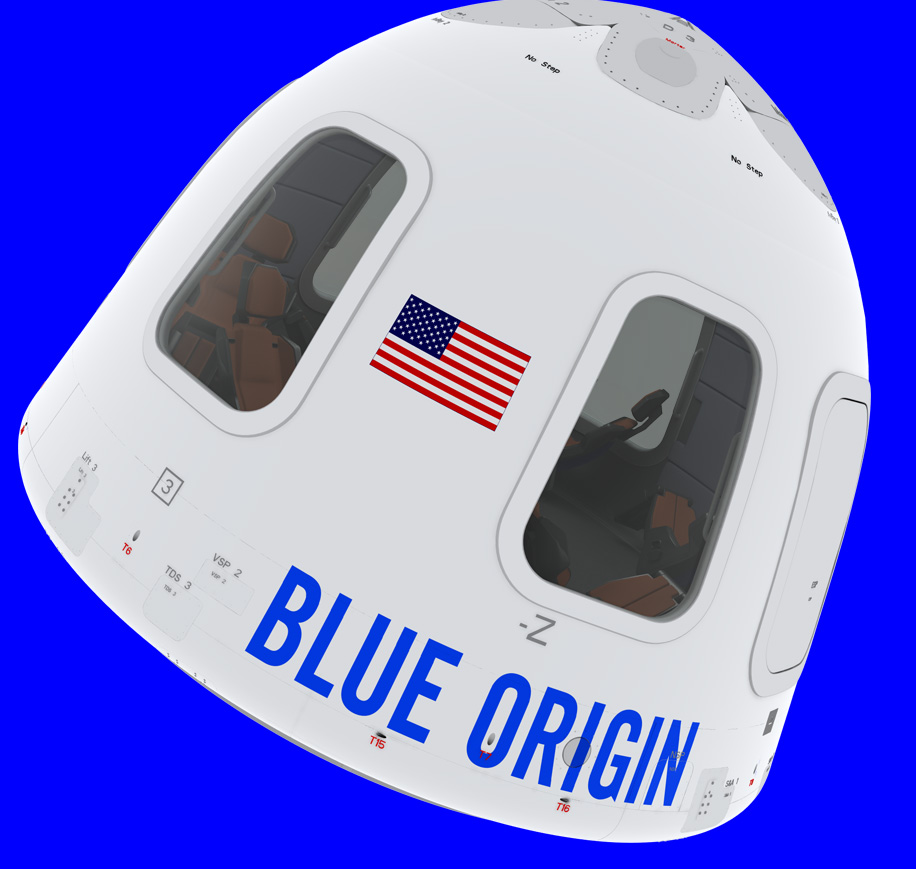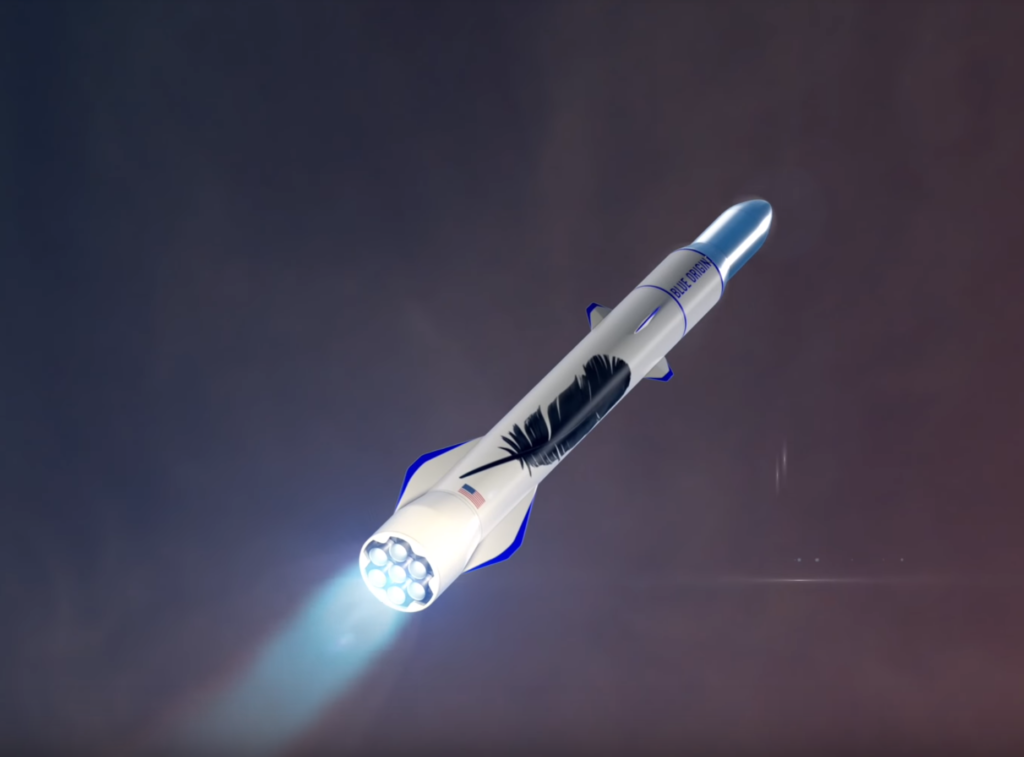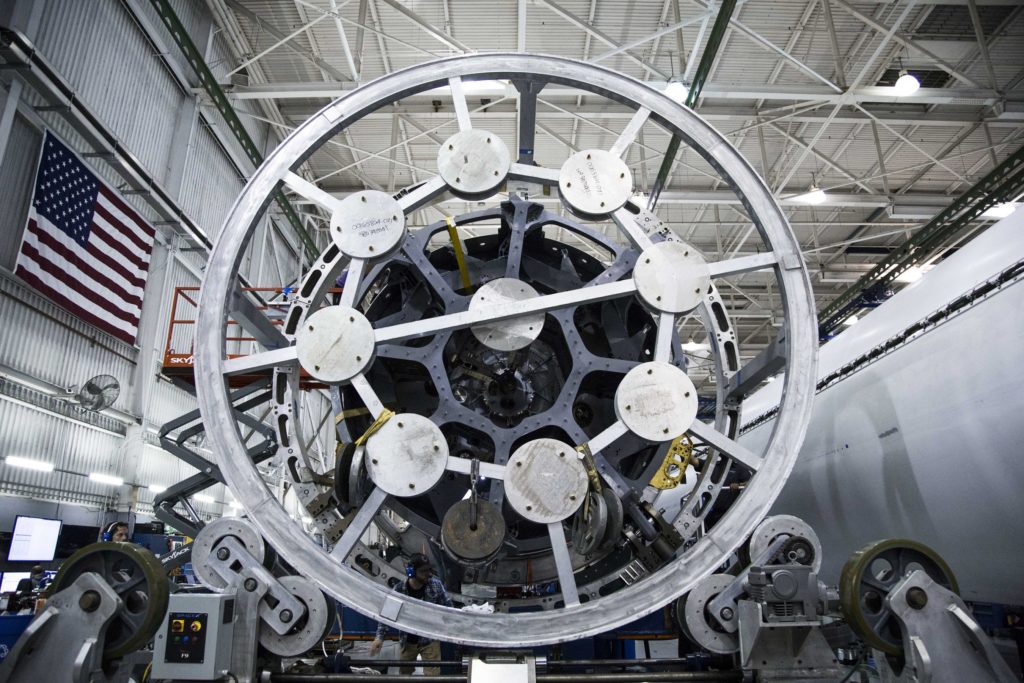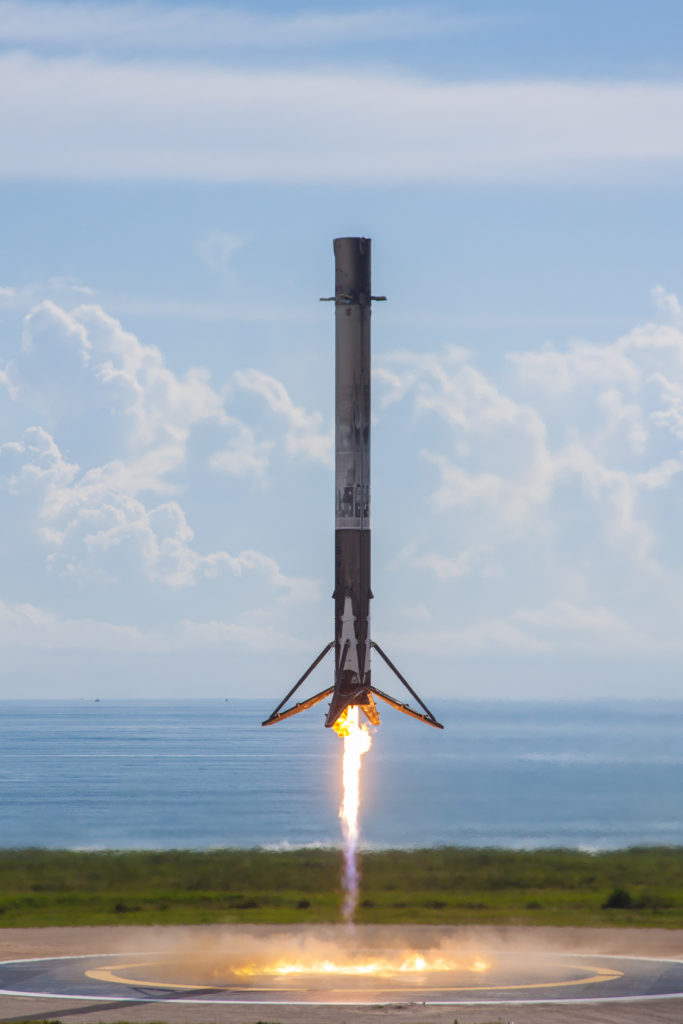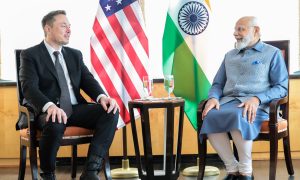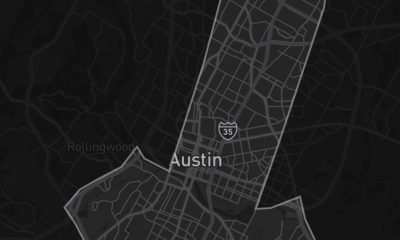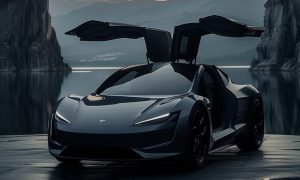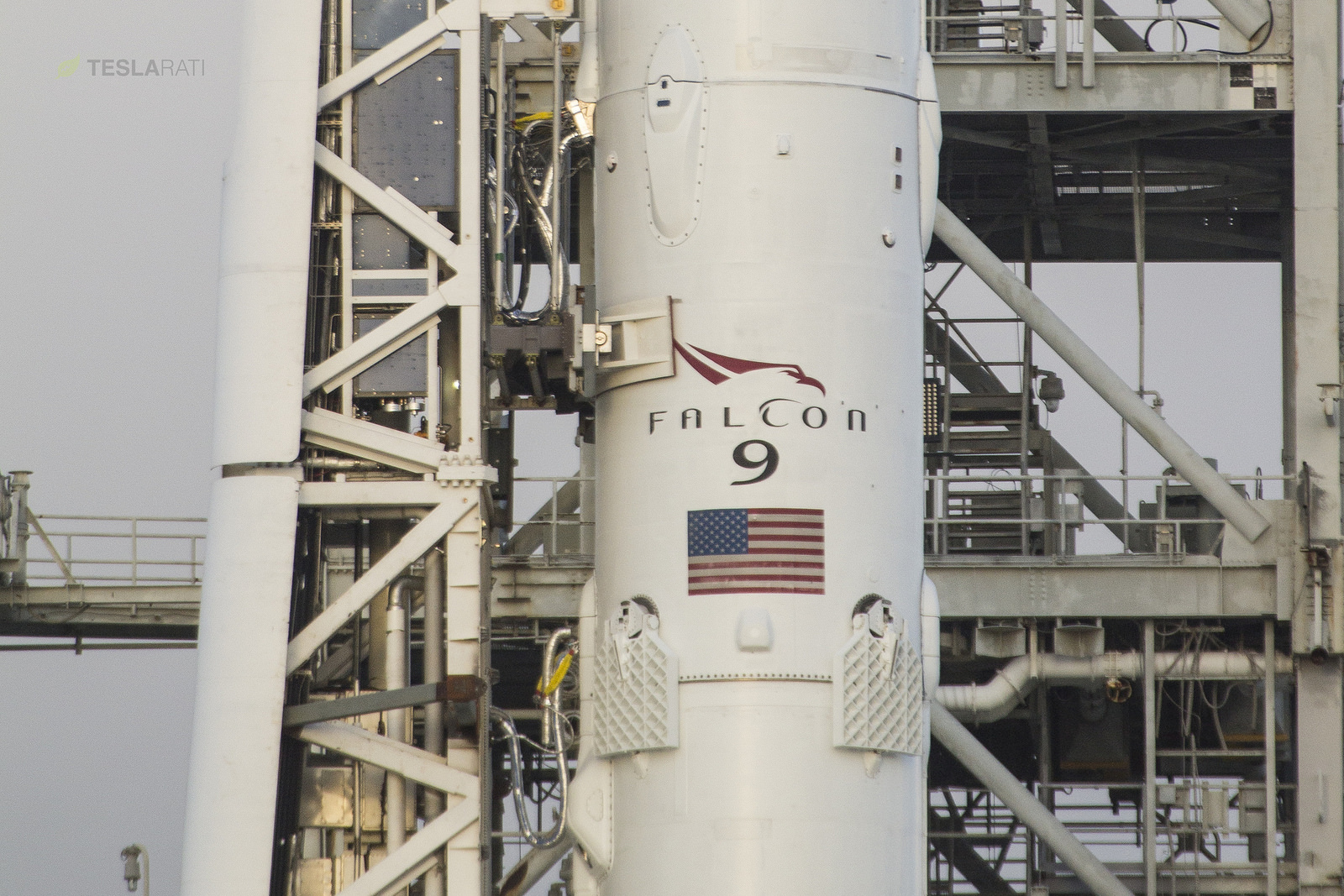

News
SpaceX vs. Blue Origin: The bickering titans of new space
In the past three years, SpaceX has made incredible progress in their program of reusability. In the practice’s first year, the young space company led by serial tech entrepreneur Elon Musk has performed three successful commercial reuses of Falcon 9 boosters in approximately eight months, and has at least two more reused flights scheduled before 2017 is out. Blue Origin, headed and funded by Jeff Bezos of Amazon fame, is perhaps most famous for its supreme confidence, best illustrated by Bezos offhandedly welcoming SpaceX “to the club” after the company first recovered the booster stage of its Falcon 9 rocket in 2015.
Blue Origin began in the early 2000s as a pet project of Bezos, a long-time fan of spaceflight and proponent of developing economies in space. After more than a decade of persistent development and increasingly complex testbeds, Blue Origin began a multi-year program of test flights with its small New Shepard launch vehicle. Designed to eventually launch tourists to the veritable edge of Earth’s atmosphere in a capsule atop it, New Shepard began its test flights in 2015 and after one partial failure, has completed five successful flights in a row. The space tourism company has subtly and not-so-subtly belittled SpaceX’s accomplishments over the last several years, and has engendered a fair bit of hostility towards it as a result.
Admittedly, CEO Elon Musk nurtured high expectations for the consequences of reuse, and has frequently discussed SpaceX’s ambition to reduce the cost of access to orbit by a factor of 10 to 100. However, after several reuses, it is clear that costs have decreased no more than 10-20%. What gives?
Well, Musk’s many comments on magnitudes of cost reduction were clearly premised upon rapid and complete reuse of both stages of Falcon 9, best evidenced by a concept video the company released in 2011.
The reality was considerably harder and Musk clearly underestimated the difficulty of second stage reuse, something he himself has admitted. COO Gwynne Shotwell was interviewed earlier this summer and discussed SpaceX’s updated approach to complete reusability, and acknowledged that second stage reuse was no longer a real priority, although the company will likely attempt second stage recovery as a validation of future technologies. Instead of pursuing the development of a completely reusable Falcon 9, SpaceX is instead pushing ahead with the development of a much larger rocket, BFR. BFR being designed to enable the sustainable colonization of space by realizing Musk’s original ambition of magnitudes-cheaper orbital launch capabilities.
Competition on the horizon?
Meanwhile, SpaceX’s only near-term competitor interested in serious reuse has made gradual progress over the last several years, accelerating its pace of development more recently. Blue Origin’s second New Shepard vehicle, designed to serve the suborbital space tourism industry, conducted an impressive five successful launches and landings over the course of 2016 before being summarily retired. NS2’s antecedent suffered a failure while attempting its first landing and was destroyed in 2015, but Blue learned quickly from the issues of Shepard 1 and has already shipped New Shepard 3 to its suborbital launch facilities near Van Horn, Texas. While NS3 is aiming for an inaugural flight later this year, NS4 is under construction in Kent, Washington and could support Blue’s first crewed suborbital launches in 2018.
More significant waves were made with an announcement in 2016 that Blue was pursuing development of a partially reusable orbital-class launch vehicle, the massive New Glenn. On paper, New Glenn is quite a bit larger than even SpaceX’s Falcon 9, and appears to likely be more capable than the company’s “world’s most powerful rocket” while completely recovering its boost stage. In a completed, manufactured, and demonstrably reliable form, New Glenn would be an extraordinarily impressive and capable launch vehicle that could undoubtedly catapult Blue Origin into position of true competition with SpaceX’s reusability efforts.
- The New Shepard booster. (Blue Origin)
- Blue Origin’s New Shepard capsule could carry passengers as high as 100km in 2018. (Blue Origin)
- A render of Blue Origin’s larger New Glenn vehicle. (Blue Origin)
However, while Blue Origin executives brag about “operational reusability” and tastelessly lampoon efforts that “decided to slap some legs on [to] see if [they] could land it”, the unmentioned company implicated in those barbs has begun to routintely and commercially reuse orbital-class boosters five times the size of Blue’s suborbital testbed, New Shepard.
Apples to oranges
The only point at which Blue Origin poses a risk to SpaceX’s business can be found in a comparison of funding sources. SpaceX first successes (and failures) were funded out of Elon Musk’s own pocket, but nearly all of the funding that followed was won through competitive government contracts and rounds of private investment. To put it more simply, SpaceX is a business that must balance costs and returns, while Blue Origin is funded exclusively out of billionaire CEO Jeff Bezos’ pocket.
As a result of being completely privately funded, Bezos’ deep pockets could render Blue more flexible than SpaceX when pricing launches. If Blue chooses to aggressively price New Glenn by accounting for booster reusability, it could pose a threat to SpaceX’s own business strategy. If SpaceX is unable to recoup its investment in reusability before New Glenn is regularly conducting multiple commercial missions per year, likely no earlier than 2021 or 2022, SpaceX’s Falcon 9 pricing could be rendered distinctly noncompetitive.
However, this concern seems almost entirely misplaced. SpaceX has half a decade of experience mass-producing orbital-class (reusable) rockets, (reusable) fairings, and propulsion systems, whereas Blue Origin at best has minimal experience manufacturing a handful of suborbital vehicles over a period of a few years. Blue has a respectable amount of experience with their BE-3 hydrolox propulsion system, and that will likely transfer over to the BE-3U vacuum variant to be used for New Glenn’s third stage. The large methalox rocket engine (BE-4) that will power New Glenn’s first stage also conducted its first-ever hot-fire just weeks ago, a major milestone in propulsion development but also a reminder that BE-4 has an exhaustive regime of engineering verification and flight qualification testing ahead of it.
First hotfire of our BE-4 engine is a success #GradatimFerociter pic.twitter.com/xuotdzfDjF
— Blue Origin (@blueorigin) October 19, 2017
Perhaps more importantly, the company’s relative success with New Shepard’s launch, recovery, and reuse has not and cannot move beyond small suborbital hops, and thus cannot provide the experience at the level of orbital rocketry. New Shepard is admittedly capable of reaching an altitude of 100km, but the suborbital vehicle’s flight regime does not require it to travel beyond Mach 4 (~1300 m/s). The first stage of Falcon 9, however, is approximately four times as tall and three times the mass of New Shepard, and boosters attempting recovery during geostationary missions routinely reach almost twice the velocity of New Shepard, entering the thicker atmosphere at more than 2300 m/s (1500-1800 m/s for LEO missions). Falcon 9’s larger mass and velocity translates into intense reentry heating and aerodynamic forces, best demonstrated by the glowing aluminum grid fins that can often be seen in SpaceX’s live coverage of booster recovery. Blue Origin’s New Glenn concept is extremely impressive on paper, but the company will have to pull off an extraordinary leap of technological maturation to move directly from suborbital single-stage hops to multi-stage orbital rocketry. Blue’s accomplishments with New Shepard are nothing to scoff at, but they are a far cry from routine orbital launch services.
SpaceX’s future fast approaches
Translating back to the new establishment, Falcon 9 will likely remain SpaceX’s workhorse rocket for some five or more years, at least until BFR can prove itself to be a reliable and affordable replacement. This change in focus, combined with the downsides of second stage recovery and reuse on a Falcon 9-sized vehicle, means that SpaceX will ‘only’ end up operationally reusing first stages and fairings from the vehicle. The second stage accounts for approximately 20-30% of Falcon 9’s total cost, suggesting that rapid and complete reuse of the fairing and first stage could more than halve its ~$62 million price. Yet this too ignores another mundane fact of corporate life SpaceX must face. Its executives, Musk included, have lately expressed a desire to at least partially recoup the ~$1 billion that was invested to develop reuse. Assuming a partial 10% reduction in cost to reuse customers and profit margins of 50% with rapid and total reuse of the first stage and fairing, 20 to 30 commercial reuses would recoup most or all of SpaceX’s reusability investment.
Musk recently revealed that SpaceX is aiming to complete 30 launches in 2018, and that figure will likely continue to grow in 2019, assuming no major anomalies occur. Manufacturing will rapidly become the main choke point for increased launch cadence, suggesting that drastically higher cadences will largely depend upon first stage reuse with minimal refurbishment, which just so happens to be the goal of the Falcon 9’s upcoming Block 5 iteration. Even if the modifications only manage a handful of launches without refurbishment, rather than the ten flights being pursued, each additional flight without maintenance will effectively multiply SpaceX’s manufacturing capabilities. More bluntly: ten Falcon 9s capable of five reflights could do the same job of 50 brand new rockets with 1/5th of the manufacturing backend.
- BulgariaSat-1 was successfully launched 48 hours before Iridium-2, and marked the second or three successful, commercial reuses of an orbital rocket. (SpaceX)
- SpaceX’s Hawthorne factory routinely churns out one to two complete Falcon 9s every month. (SpaceX)
- Falcon 9 B1040 returns to LZ-1 after the launch of the USAF’s X-37B spaceplane. (SpaceX)
Assuming that upcoming reuses proceed without significant failures and Falcon 9 Block 5 subsumes all manufacturing sometime in 2018 or 2019, it is entirely possible that SpaceX will undergo an extraordinarily rapid phase change from expendability to reusability. Mirroring 2017, we can imagine that SpaceX’s Hawthorne factory will continue to churn out at least 10 to 20 Block 5 Falcon 9s over the course of 2018. Assuming 5 to 10 maintenance-free reuses and a lifespan of as many as 100 flights with intermittent refurb, a single year of manufacturing could provide SpaceX with enough first stages to launch anywhere from 50 to 2000 missions. The reality will inevitably find itself somewhere between those extremely pessimistic and optimistic bookends, and they of course do not account for fairings, second stages, or expendable flights.
If we assume that the proportional cost of Falcon 9’s many components very roughly approximates the amount of manufacturing backend needed to produce them, downsizing Falcon 9 booster production by a factor of two or more could free a huge fraction of SpaceX’s workforce and floor space to be repurposed for fairing and second stage production, as well as the company’s Mars efforts. Such a phase change would also free up a considerable fraction of the capital SpaceX continually invests in its manufacturing infrastructure and workforce, capital that could then be used to ready SpaceX’s facilities for production and testing of its Mars-focused BFR and BFS.
“Gradatim ferociter”
It cannot be overstated that the speculation in this article is speculation. Nevertheless, it is speculation built on real information provided over the years by SpaceX’s own executives. Rough estimates like this offer a glimpse into a new launch industry paradigm that could be only a year or two away and could allow SpaceX to begin aggressively pursuing its goal of enabling a sustainable human presence on Mars and throughout the Solar System.
Blue Origin’s future endeavors shine on paper and their goal of enabling millions to work and live space are admirable, but the years between the present and a future of routine orbital missions for the company may not be kind. The engineering hurdles that litter the path to orbital rocketry are unforgiving and can only be exacerbated by blind overconfidence, a lesson that is often only learned the hard way. Blue Origin’s proud motto “Gradatim ferociter” roughly translates to “Step by step, ferociously.” One can only hope that some level of humility and sobriety might temper that ferocity before customers entrust New Glenn with their infrastructural foundations and passengers entrust New Shepard with their lives.
News
Tesla launches in India with Model Y, showing pricing will be biggest challenge
Tesla finally got its Model Y launched in India, but it will surely come at a price for consumers.

Tesla has officially launched in India following years of delays, as it brought its Model Y to the market for the first time on Tuesday.
However, the launch showed that pricing is going to be its biggest challenge. The all-electric Model Y is priced significantly higher than in other major markets in which Tesla operates.
On Tuesday, Tesla’s Model Y went up for sale for 59,89,000 rupees for the Rear-Wheel Drive configuration, while the Long Range Rear-Wheel Drive was priced at 67,89,000.
This equates to $69,686 for the RWD and $78,994 for the Long Range RWD, a substantial markup compared to what these cars sell for in the United States.
🚨 Here’s the difference in price for the Tesla Model Y in the U.S. compared to India.
🚨 59,89,000 is $69,686
🚨 67,89,000 is $78,994 pic.twitter.com/7EUzyWLcED— TESLARATI (@Teslarati) July 15, 2025
Deliveries are currently scheduled for the third quarter, and it will be interesting to see how many units they can sell in the market at this price point.
The price includes tariffs and additional fees that are applied by the Indian government, which has aimed to work with foreign automakers to come to terms on lower duties that increase vehicle cost.
Tesla Model Y seen testing under wraps in India ahead of launch
There is a chance that these duties will be removed, which would create a more stable and affordable pricing model for Tesla in the future. President Trump and Indian Prime Minister Narendra Modi continue to iron out those details.
Maharashtra Chief Minister Devendra Fadnavis said to reporters outside the company’s new outlet in the region (via Reuters):
“In the future, we wish to see R&D and manufacturing done in India, and I am sure at an appropriate stage, Tesla will think about it.”
It appears to be eerily similar to the same “game of chicken” Tesla played with Indian government officials for the past few years. Tesla has always wanted to enter India, but was unable to do so due to these import duties.
India wanted Tesla to commit to building a Gigafactory in the country, but Tesla wanted to test demand first.
It seems this could be that demand test, and the duties are going to have a significant impact on what demand will actually be.
Elon Musk
Tesla ups Robotaxi fare price to another comical figure with service area expansion
Tesla upped its fare price for a Robotaxi ride from $4.20 to, you guessed it, $6.90.

Tesla has upped its fare price for the Robotaxi platform in Austin for the first time since its launch on June 22. The increase came on the same day that Tesla expanded its Service Area for the Robotaxi ride-hailing service, offering rides to a broader portion of the city.
The price is up from $4.20, a figure that many Tesla fans will find amusing, considering CEO Elon Musk has used that number, as well as ’69,’ as a light-hearted attempt at comedy over the past several years.
Musk confirmed yesterday that Tesla would up the price per ride from that $4.20 point to $6.90. Are we really surprised that is what the company decided on, as the expansion of the Service Area also took effect on Monday?
But the price is now a princely $6.90, as foretold in the prophecy 😂
— Elon Musk (@elonmusk) July 14, 2025
The Service Area expansion was also somewhat of a joke too, especially considering the shape of the new region where the driverless service can travel.
I wrote yesterday about how it might be funny, but in reality, it is more of a message to competitors that Tesla can expand in Austin wherever it wants at any time.
Tesla’s Robotaxi expansion wasn’t a joke, it was a warning to competitors
It was only a matter of time before the Robotaxi platform would subject riders to a higher, flat fee for a ride. This is primarily due to two reasons: the size of the access program is increasing, and, more importantly, the service area is expanding in size.
Tesla has already surpassed Waymo in Austin in terms of its service area, which is roughly five square miles larger. Waymo launched driverless rides to the public back in March, while Tesla’s just became available to a small group in June. Tesla has already expanded it, allowing new members to hail a ride from a driverless Model Y nearly every day.
The Robotaxi app is also becoming more robust as Tesla is adding new features with updates. It has already been updated on two occasions, with the most recent improvements being rolled out yesterday.
Tesla updates Robotaxi app with several big changes, including wider service area
News
Tesla Model Y and Model 3 dominate U.S. EV sales despite headwinds
Tesla’s two mainstream vehicles accounted for more than 40% of all EVs sold in the United States in Q2 2025.

Tesla’s Model Y and Model 3 remained the top-selling electric vehicles in the U.S. during Q2 2025, even as the broader EV market dipped 6.3% year-over-year.
The Model Y logged 86,120 units sold, followed by the Model 3 at 48,803. This means that Tesla’s two mainstream vehicles accounted for 43% of all EVs sold in the United States during the second quarter, as per data from Cox Automotive.
Tesla leads amid tax credit uncertainty and a tough first half
Tesla’s performance in Q2 is notable given a series of hurdles earlier in the year. The company temporarily paused Model Y deliveries in Q1 as it transitioned to the production of the new Model Y, and its retail presence was hit by protests and vandalism tied to political backlash against CEO Elon Musk. The fallout carried into Q2, yet Tesla’s two mass-market vehicles still outsold the next eight EVs combined.
Q2 marked just the third-ever YoY decline in quarterly EV sales, totaling 310,839 units. Electric vehicle sales, however, were still up 4.9% from Q1 and reached a record 607,089 units in the first half of 2025. Analysts also expect a surge in Q3 as buyers rush to qualify for federal EV tax credits before they expire on October 1, Cox Automotive noted in a post.
Legacy rivals gain ground, but Tesla holds its commanding lead
General Motors more than doubled its EV volume in the first half of 2025, selling over 78,000 units and boosting its EV market share to 12.9%. Chevrolet became the second-best-selling EV brand, pushing GM past Ford and Hyundai. Tesla, however, still retained a commanding 44.7% electric vehicle market share despite a 12% drop in in Q2 revenue, following a decline of almost 9% in Q1.
Incentives reached record highs in Q2, averaging 14.8% of transaction prices, roughly $8,500 per vehicle. As government support winds down, the used EV market is also gaining momentum, with over 100,000 used EVs sold in Q2.
Q2 2025 Kelley Blue Book EV Sales Report by Simon Alvarez on Scribd
-

 News3 days ago
News3 days agoTesla debuts hands-free Grok AI with update 2025.26: What you need to know
-

 Elon Musk1 week ago
Elon Musk1 week agoElon Musk confirms Grok 4 launch on July 9 with livestream event
-

 Elon Musk5 days ago
Elon Musk5 days agoxAI launches Grok 4 with new $300/month SuperGrok Heavy subscription
-

 News2 weeks ago
News2 weeks agoTesla Model 3 ranks as the safest new car in Europe for 2025, per Euro NCAP tests
-

 Elon Musk2 weeks ago
Elon Musk2 weeks agoxAI’s Memphis data center receives air permit despite community criticism
-

 News5 days ago
News5 days agoTesla begins Robotaxi certification push in Arizona: report
-

 Elon Musk2 weeks ago
Elon Musk2 weeks agoTesla reveals it is using AI to make factories more sustainable: here’s how
-

 Elon Musk2 weeks ago
Elon Musk2 weeks agoTesla scrambles after Musk sidekick exit, CEO takes over sales

